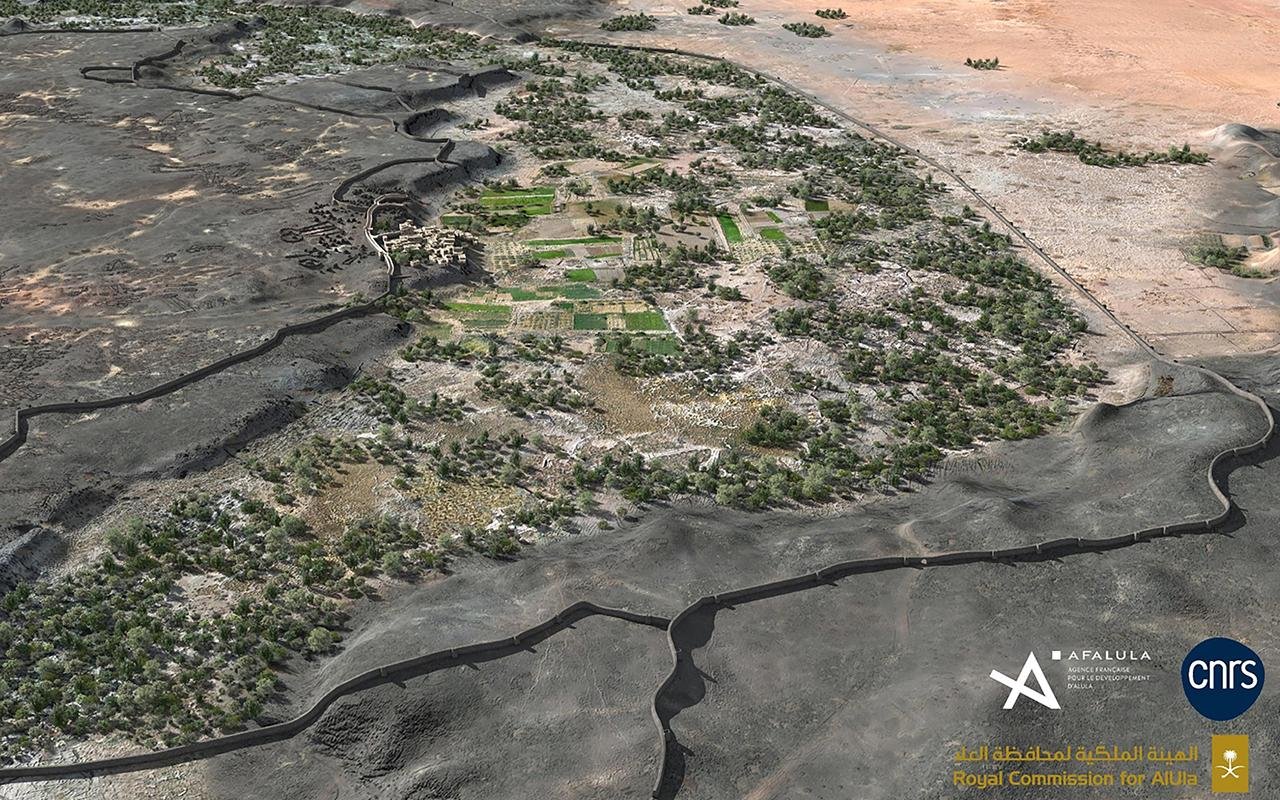Archaeologists have recently uncovered a colossal Bronze Age fortification surrounding the Khaybar Oasis in the North Arabian Desert, making it one of the two largest walled oases in Saudi Arabia. The discovery was made by a team of scientists from the Centre National de la Recherche Scientifique (CNRS) and the Royal Commission for AlUla (RCU).
 Digital reconstruction of the northern part of the walled oasis of Khaybar around 2000 BCE. Credit: Khaybar Longue Durée Archaeological Project, M. Bussy & G. Charloux / CNRS
Digital reconstruction of the northern part of the walled oasis of Khaybar around 2000 BCE. Credit: Khaybar Longue Durée Archaeological Project, M. Bussy & G. Charloux / CNRS
The immense wall, dating back approximately 4,000 years, stretches over 14.5 kilometers, with original dimensions estimated at 1.7 to 2.4 meters in thickness and approximately 5 meters in height. Preserving only 41% of its original length (5.9 km and 74 bastions), the fortification enclosed a vast territory of nearly 1,100 hectares.
The fortification’s construction, determined through radiocarbon dating of samples collected during excavations, is estimated to have occurred between 2250 and 1950 BCE. Despite being a well-preserved relic of the past, the Khaybar Oasis wall had remained hidden for centuries, a fact attributed to the extensive transformation of the desert landscape over the millennia.
Archaeological studies have revealed that Khaybar Oasis, alongside Tayma, played a pivotal role in the network of fortified settlements in northwestern Arabia during the Bronze Age.
“Dating from the Late third millennium BCE, the ramparts of Khaybar were probably built by Indigenous populations as they settled down and ostentatiously demarcated their oasis territory,” the researchers write in their new study. This monumental construction, lasting for several centuries before being replaced, serves as a crucial landmark in the architectural and social heritage of northern Arabia.
The researchers propose three main reasons for the construction of these mᴀssive desert defenses. Firstly, the walls served as physical protection against mobile desert groups, a known danger for sedentary groups during the ancient and early Islamic periods. Secondly, the fortifications helped control erosion, soil salinization, and flash flooding – constant threats to agricultural lands. Lastly, the walls acted as visible markers, emphasizing group cohesion while establishing territorial and social idenтιтy.
Advanced methods, such as remote sensing and 3D scanning, are being employed to meticulously map, document, and analyze the fortifications, ensuring their preservation and accurate interpretation. This technological approach allows for the creation of intricate digital models.
While the study confirms the Khaybar Oasis’s connection to a network of walled oases in northwestern Arabia, questions regarding why it was built and the nature of the populations involved persist.
More information: Charloux, G., Shabo, S., Chung-To, G., Depreux, B., Guermont, F., Guadagnini, K., … AlMushawh, M. (2024). The ramparts of Khaybar. Multiproxy investigation for reconstructing a Bronze Age walled oasis in Northwest Arabia. Journal of Archaeological Science: Reports, 104355. doi:10.1016/j.jasrep.2023.104355





